#tokai & saeki
Explore tagged Tumblr posts
Text























Black Pean S1 EP10 END part 3
EP10 recap p1 // P2 // P3
GIFS P1 // P2 // P3 // P4 //P5 //P6 // P7 // P8
#Black Pean#Black Pean series#series#Black Pean s1#uchino#uchino seiyo#seiyo uchino#uchino masaaki#masaaki uchino#ninomiya#nino#ninomiya kazunari#series recap#j series#tokai seishiro#saeki seigo#tokasae#tokai x saeki#tokai & saeki
8 notes
·
View notes
Text

some black forceps/ブラックペアン fan art— just tokai & saeki for now :) (also sera on the couch)
82 notes
·
View notes
Note
Whats ur show aboutt (invitation to ramble if u Wish.............. )
ブラックペアン (black forceps, or black pean) is a medical jdrama based around a cardiovascular wing in a university hospital and is available on netflix. it's based on the book black pean 1988 and is one of my biggest spinterests. I feel like I sound like a Wikipedia lol, but I want to explain it without spoiling anything.
Tojo university (previously mentioned university hospital) has an extremely high success rate due to the head professor and heart surgeon, Segiō Saeki. The main character, Masashi Sera is an intern in the department training to be a surgeon. He ends up being an intern under a second character, Seishiro Tokai who is an extremely skilled surgeon with no rank due to not caring about moving up in power. He'll fix surgeons mistakes for a price, but never lets a paitent in his care die.
I'm really passionate about this show, and I adore all the depth and power dynamics in it. Tokai's character is very important to me and I'm extremely autistic about him 😋
#marbles rambles#this show genuinely has me in a choke hold#like I've watched it back to back 4 times in less than a week#and will be watching it again#asks
3 notes
·
View notes
Text
Guys let me gush about Black Pean! It’s so good!

I started watching Black Pean, or Black Forceps the other day and binged until episode 7! It was so good!!! I can’t wait to finish it!
Also sorry for low quality screenshots!
Nino was so good as Tokai! I can’t say I’d want to be friends with him if he were a real person but he’s an amazing character lol! Usually I think of Nino as the cute little prankster so to see him play such an intimidating character was so interesting! He’s such an amazing actor 😭😭
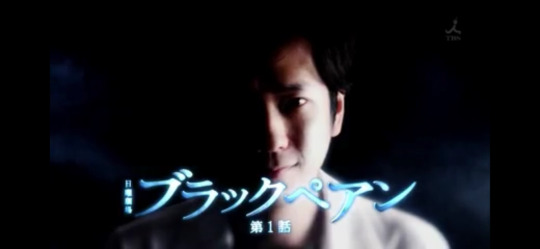
Sena is really good too! I love how Tokai starts to trust him! He’s just a little guy and he’s learning! It’s so cute when Tokai trusts him to stitch up the patient in the ER even though he’s an intern. Takeuchi did an amazing job as Sena. :))

Saeki is such an ass like ughhhh he’s such an arrogant little shit and he knows it. I love his character though! Seiyo Uchino plays him so well! The man is so versatile! Like he’s such an arrogant ass in this show yet he was also in What Did You Eat Yesterday? as like the sweetest gay man in the world 😭 (He’s handsome too ngl)

And Takashina. Just Takashina. I know he might not be everyone’s favourite. But he is mine. He might just be the Snipe guy to a lot of viewers, sure he’s a bit misguided and kinda all over the place. He’s a mess, but he’s my mess. If Takashina has 100 fans I am one of those fans. If Takashina has only one fan, I am that fan. And if he has no fans. I am dead. I love this man so much I, no joke, had a dream about him the other night. Kotaro Koizumi, don’t ever change, you beautiful man. 💕💕



#black pean#black forceps#arashi#嵐#kazunari ninomiya#ryoma takeuchi#seiyo uchino#kotaro koizumi#this show aaaaabhhhhhhhh 😭😭😭💕😭😭😭💕💕💕#ninooo 💛💛💛💛
13 notes
·
View notes
Text


A new episode of the series "Black Pean-2" airs today at 21.00. p.m on japanese time and 14.00 p.m. on european time on "TBS". Don't miss it!
Amagi(Kazunari Ninomiya) suffers from a heart defect since childhood and eventually falls. Saeki(Masaki Uchino)is the chief surgeon, and together with Sera(Ryoma Takeuchi), he sets out to operate, but the only way to save his life is to perform a direct anastomosis and Saeki's method at the same time.
Just then, to their surprise, Amagi's twin brother Tokai (Kazunari Ninomiya, in two roles) appears in the operating theatre. When asked by Saeki if he can perform a direct anastomosis, he replies: ‘I won't do it. I'm not going to do it. It's like gambling,’ he says with a smile....
Will he be able to save Amagi's life?
The story also reveals the reason why Amagi does the shunt trial (choosing between two sides) during surgeries, how the direct anastomosis came about, and his sad past...!
So what does Black Pean's past hide?
4 notes
·
View notes
Photo










└ Tokai Seishiro: “It all ends today.”
Cr: Black Pean FINAL Episode 10
#arashi#black pean#black nino pain#今日、すべて終わる#ninomiya kazunari#ninomi~~~~~#tokai sensei~~~#my eyeballs cannot stop tearing~~#wahhhhhhhh~#but i can't stop admiring nino's aesthetics#tokai seishiro#ope no akuma#otsukaresama deshitta~#nino to minna-san#hontnoi arigatou gozaimasu~#that second-last pic#tokai sensei's holding back from tearing up#to have been so adamant to tear saeki sensei that he almost forgot his own vow to save the patient#ahhh~ watashi no kokoro
48 notes
·
View notes
Photo

[On the topic of Tokai’s] relationship with Saeki-sensei → *consecutive censored sfx*
(Got it.)
Sorry Nino, but I choked on my spit reading this one.
#tokai seishiro#saeki seigo#I'm cackling#have i mentioned i ship saekixtokai?#well okay#i ship saekixtokai#black pean#baystorm#Twitter tweets#2018
2 notes
·
View notes
Text
Tokai: The opearation was 100% success.
Sera: Dr Saeki is dead!
Tokai: Yup, 100% success.
17 notes
·
View notes
Text
what she says: i’m fine
what she means: why didn’t saeki tell tokai about the truth way before? it would have prevented tokai to waste all this time on seeking revenge just to learn he directed his anger towards the wrong person. he’s not the devil people make him out to be, he was pushed to anger for nothing & it’s unfair. and why are we ignoring tokai‘s pain until the end, are we supposed to just brush it off as ‘oh yea he was wrong and he has to deal with the consequences’ and continue? and where did tokai go? why is he the one who doesn’t get to have a happy end? he deserves redemption too after everything. and will anyone ever let me know about the story between neko and tokai and how come they make such a great team? and what happens to neko or sera when tokai is gone? where does tokai live if he leaves the naproom and where does all the rice go and who has to move it? if tbs doesn’t give us a second season how am i supposed to go on from there .. ?
#black pean#ninomiya kazunari#why yes i will never be ok w the ending unless we get a sequel#black pean spoilers
36 notes
·
View notes
Text
black pean (rating 13.7%)
Medical dramas and crime solving dramas are the 2 genres that dominate Japanese TV. In the last few years, however, the medical dramas have been either ridiculously bordering on comically hyperbolic (Doctors and Doctor X), or feel-good reflective dramas like Ume-chan sensei and Kounodori. It may be that the audience's tastes are primed by the over-the-top smooth-sailing events in Doctor X or what they've come to expect from the team behind similarly "good always wins against evil" type stories of Riku Ou and Chiisana Kyoujin. This is probably reflected in the respectable but somewhat less than expected rating. What Black Pean gives in the first episode is a far less straightforward story, a complex power play where patient's lives and well-being are used as stakes, led by a main character that currently is neither clearly heroic nor villainous. In fact, most of the major players in this story remain unclear in their allegiances. There is clearly something going on between Tokai and Saeki in relation to Tokai's father (was he framed for an operation that went wrong? But why is Tokai helping Saeki out...and clearly not happy with it?) In a cast stuffed with characters with ulterior political or personal motives, Takeuchi Ryoma's character turns out to be a breath of fresh air. What would have been a boring trope in something like Code Blue, Sera's fresh-faced earnestness injects a much needed humanity and warmth into a story where the senior doctors treat patients like objects to be bartered. I know Takeuchi is the next big thing, but I'm honestly impressed with how he's done Sera's character - speaking from Code Blue 3, it's so easy to make naive helpless interns annoying (although the script for Code Blue 3 was mostly to blame than the actors), but Sera's helplessness combined with his compassion makes the audience sympathise with him and the patient. Moving onto Tokai - I feel like this will be one of the few interesting main characters to come out of Japanese medical dramas in recent years. The first episode paints him with ambivalence and promises a complex back story and motivation, which many recent medical dramas lack. I feel, in an odd way, that many actors could have done this role, but also that no one would be the same Tokai as Nino has brought out. It calls for a lot of dramatic close-ups and theatrical line deliveries, but Nino also adds his iconic relatability to it. It's an unusual role for him, but one I feel that's a long time coming. His small stature and boyish face has relegated him to a lot of tragic everyman roles, which he's obviously great at and won many accolades and awards, but as he proves here, he's more than capable of commanding the camera with an intensity that we more often associate with MatsuJun. Apparently that scene where he pats Sera on the shoulder with a bloody hand was adlibbed, and it's amazing how it adds to the tension in that scene and the frightfulness of Tokai's presence. Nino's line deliveries have always been something that marks him out over his peers and they're used to the full potential here - gliding from a bored monotone to a dangerous purr to a shout that cracks like a whip. The problem with Tokai is, when following up on the heels of the impishly likeable Miyama in 99.9 and the hot-blooded heroism in Riku Ou, it does beg the audience to be patient and persistent. He is not immediately likeable and in fact, Nino loyally sets out to be make him dislikeable. It may be that the ratings will flag because of this (Japanese audiences seem to have a thing these days for easy dramas where the heros win every game without any true obstacles), but I'm still optimistic it will have a character depth rarely seen in recent medical dramas. Besides, Nino's suturing speed is much more impressive than Daimon-Sensei's huge staring eyes when she operates.
35 notes
·
View notes
Text
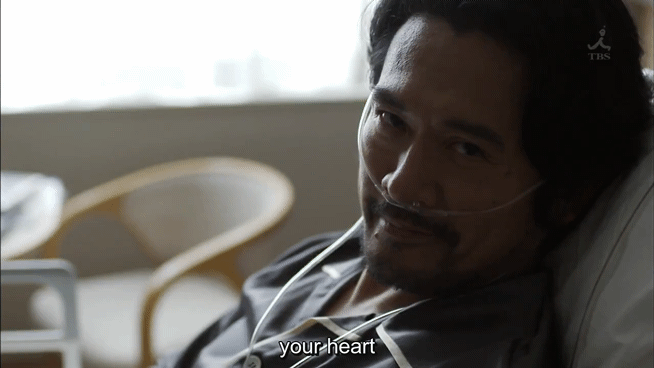
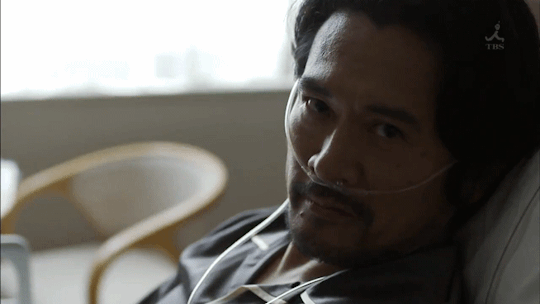


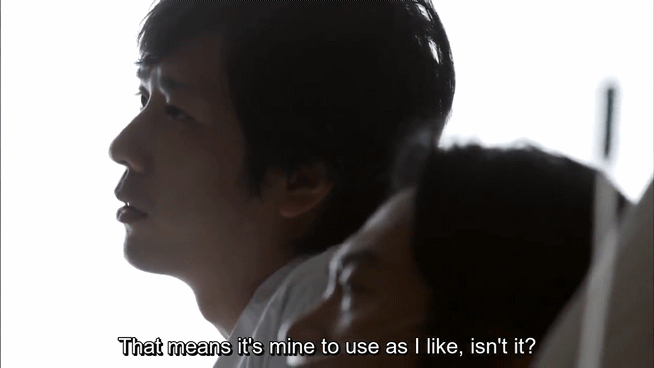


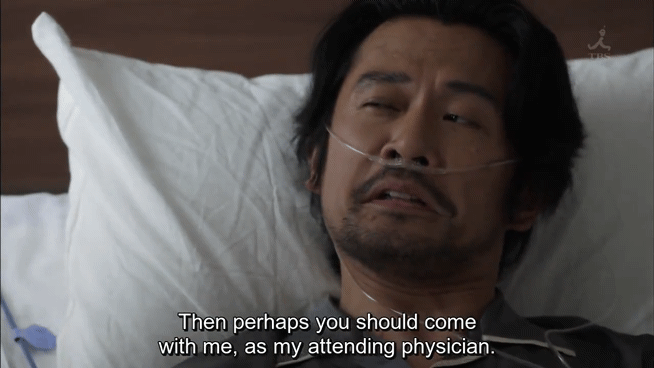


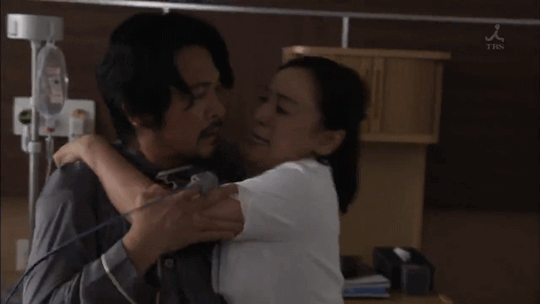


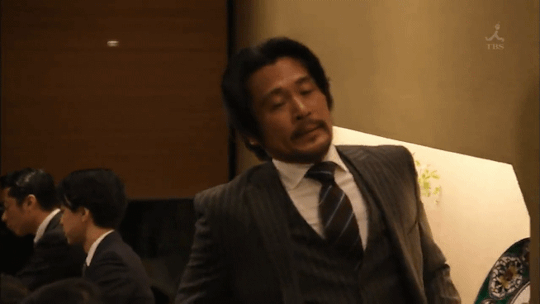


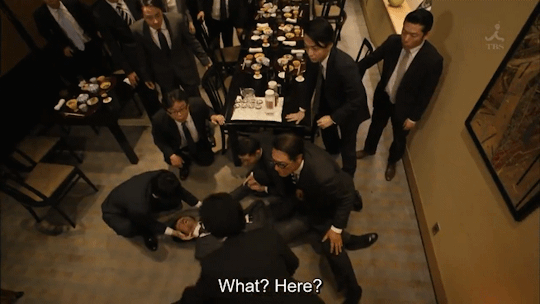




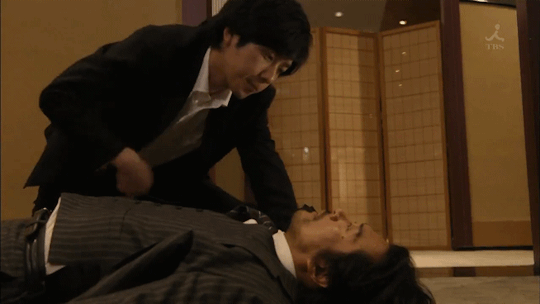



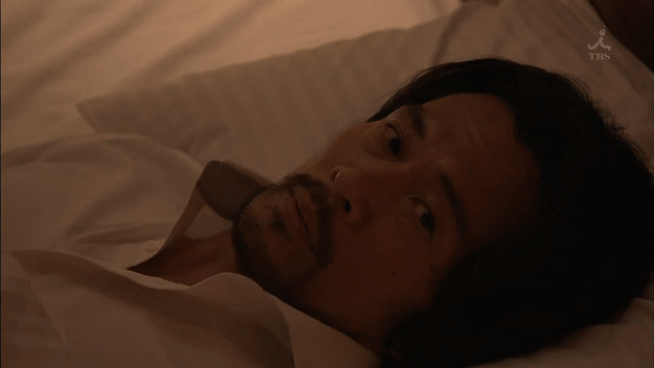

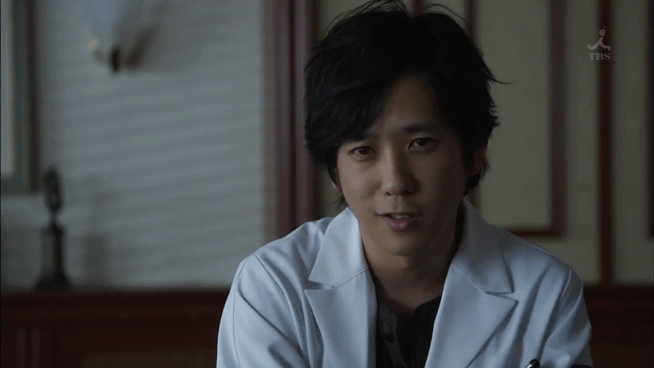


Black Pean S1EP10 [GIFS] 5
EP10 recap p1 // P2 // P3
GIFS P1 // P2 // P3 // P4 //P5 //P6 // P7 // P8
#Black Pean#Black Pean s2#series#gifs#ninomiya#nino#uchino#uchino seiyo#seiyo uchino#masaaki uchino#uchino masaaki#ブラックペアン#Black Forceps#saeki seigo#tokai#tokai x saeki#tokai seishiro#tokai & saeki
4 notes
·
View notes
Text
I am so disappointed by Black Pean for now, the three first episodes are just so meeeeh.. The characters are walking stereotypes, with Sera and Takashina being two weak crybabies while Tokai is your typical genius who can do anything (he even has his own “the Savior has arrived” music theme) and Saeki is The Big Boss in the Dark. The story is cliché after cliché, nothing credible, and characters with whom it’s very hard to be sympathetic.
I honestly hope it will get better because for now my emotional involvement is at zero.
(But then, I don’t have much experience with Japanese medical dramas, so maybe it’s me who is expecting things that I shouldn’t.)
7 notes
·
View notes
Text
Foreign relations of Japan/wako English bibliography
Chen Chingho 1960, ‘Chinese junk trade at Nagasaki at the beginning of the Qing Dynasty’, New Asia Journal (Hong Kong), 1.3: 25-50, 273-332.
J. P. Delgado, Khubilai Khan's lost fleet: in search of a legendary armada (Berkeley and Los Angeles: University of California Press, 2008).
G. Elison 1988, ‘The Priest Keinen and His Account of the Campaign in Korea, 1597-1598: An Introduction’, in Motoyama Yukihiko kyoju taikan kinen rombunshu henshu iinkai, ed. Nihon kyoikushi ronso: Motoyama Yukihiko kyoju taikan kinen rombunshu (Kyoto: Shibunkaku shuppan)
W. Enomoto 2012, ‘The current state of research on the history of Japan’s contacts with other countries in the first half of the medieval period’, AA 103: 95-120.
J. A. Fogel (ed.) 2002, Sagacious monks and bloodthirsty warriors: Chinese views of Japan in the Ming-Qing period (Norwalk CT: Eastbridge).
J. A. Fogel (ed.) 2007, Crossing the Yellow Sea: Sino-Japanese cultural contacts 1600-1950 (Norwalk CT: EastBridge 2007).
J. A. Fogel 2013, ‘Sino-Japanese shipping connections as reported in Chinese and Japanese sources’, SJS 20
R. von Glahn 2014, ‘The Ningbo-Hakata merchant network and the reorientation of East Asian maritime trade, 1150–1350’, HJAS 74: 249-279.
A. E. Goble 2009, ‘Kajiwara Shozen (1265-1337) and the medical Silk Road: Chinese and Arabic influences on medieval Japanese medicine’, in A. E. Goble, K. R. Robinson and H. Wakabayashi (eds), Tools of culture: Japan’s cultural, intellectual, medical, and technological contacts in East Asia, 1000s-1500s (Ann Arbor, Michigan: Association for Asian Studies), pp. 231-257
A. E. Goble, K. R. Robinson and H. Wakabayashi (eds) 2009, Tools of culture: Japan’s cultural, intellectual, medical, and technological contacts in East Asia, 1000s-1500s (Ann Arbor, Michigan: Association for Asian Studies).
M. Guang 2017, ‘Tributary ceremony and national security: a reassessment of Wokou diplomacy between China and Japan during the early Ming Dynasty’, Journal of Asian History 51: 27–54.
Y. Hashimoto 2012, ‘Korea in Muromachi culture: cultural exchange between Japan and Korea and between Ryukyu and Korea’, AA 103: 23-52.
B. H. Hazard 1967, 'The formative years of the Wako', MN 22:260277
B. Hazard 1976, ‘The wako and Korean responses’, in J. B. Parsons, ed., Papers in honor of Professor Woodbridge Bingham: a festschrift for his seventy-fifth birthday (San Francisco: Chinese Materials Center) .
S. M. Hong-Schunka 2005, ‘An aspect of East Asian maritime trade: the exchange of commodities between Korea and Ryukyu (1389-1638)’, in A. Schottenhammer, ed., Trade and transfer across the East Asian “Mediterranean” (Wiesbaden: Harrassowitz), pp. 125-161
H. M. Horton 2012, Traversing the frontier : the Man'yoshu Account of a Japanese mission to Silla in 736-737 (Cambridge MA: Harvard University Press).
K-J. Hur & Y-S. Cho 2016, ‘Aspects of Korea-Japan cultural exchanges analyzed through Tongshinsa delegations during the National Seclusion period’, Athens journal of history 2.2: 129-136.
K. Ito 2008, ‘Japan and Ryukyu during the fifteenth and sixteenth centuries’, AA 95: 79-99
E. Hae-Jin Kang 1997, Diplomacy and ideology in Japanese-Korean relations from the fifteenth to the eighteenth century (New York; St Martin’s Press)
E. H. Kang 1998, ‘Diplomacy and Ideology in Early Modern Korean-Japanese Relations’, in Sang-Oak Lee and Duk-Soo Park, eds, Perspectives on Korea(Sydney: Wild Peony)
C-S. Kim 2010, ‘Parhae’s maritime routes to Japan in the eighth century,’ Seoul journal of Korean studies 23: 1-22.
M. Laver 2012, 'Diplomacy, piracy, and the space between: Japan and East Asia in the medieval period', in K. F. Friday, ed., Japan emerging: premodern history to 1850 (Boulder CO: Westview Press)
J. B. Lewis (ed.), 2015. The East Asian war, 1592-1598: international relations, violence, and memory (Abingdon: Routledge).
G. Ma 2017, ‘Tributary ceremony and national security: a reassessment of Wokou diplomacy between China and Japan during the early Ming Dynasty’, JAH 51: 27-54.
G. M. McCune 1948, ‘The Japanese trading post at Pusan’, Korean review 1: 11-15.
S. Ogura 1991, 'About two Japanese scrolls: "Sea map - trade with the state of Jiazhi" and "Avalokitesvara"', in Ancient town of Hoi An: an international symposium held in Danang on 22-23 March 1990 (Hanoi: Foreign Languages Publishing House), pp. 128-134
H. Okamoto 2008, ‘Foreign policy and maritime trade in the early Ming period: Focusing on the Ryukyu kingdom’, AA 95: 35-55
S-R. Park 1992, ‘Korea-Japan Relations and the History of Science and Technology’, Korea Journal 32.4: 80-88
J. Reckel 1995, Bohai. Geschichte und Kultur eines manschurisch-koreanischen Kônigreiches der Tang-Zeit (Wiesbaden: Harrassowitz Verlag)
K. R. Robinson 1996, ‘The Tsushima governonr and regulation of Japanese access to Choson in the fifteenth and sixteenth centuries’, Korean studies 20: 23-50
K. R. Robinson 1996, ‘The Tsushima governonr and regulation of Japanese access to Choson in the fifteenth and sixteenth centuries’, Korean studies 20: 23-50
K. R. Robinson 1997, ‘The Jiubian and Ezogachishima embassies to Choson, 1478-1482’, Chosenshi kenkyukai ronbunshu 35: 55-86
K. R. Robinson 1999, ‘The imposter branch of the Hatakeyama family and Japanese-Choson Korea court relations’, Ajia bunka kenkyu 25: 67-88
K. R. Robinson 2000, ‘Centering the King of Choson: aspects of Korean maritime diplomacy, 1392-1592’, JAS 59: 109-125
K. R. Robinson 2001, 'Treated as treasures: the circulation of sutras in maritime Northeast Asia, from 1388 to the mid-sixteenth century', EAH 21: 33-54
K. R. Robinson 2006, ‘An island's place in history: Tsushima in Japan and in Choson, 1392-1592’, Korean studies 30: 40-66
K. R. Robinson 2009, ‘A Japanese trade mission to Choson Korea, 1537-1540: the Sonkai tokai nikki and the Korean tribute system’, in A. E. Goble, K. R. Robinson and H. Wakabayashi (eds), Tools of culture: Japan’s cultural, intellectual, medical, and technological contacts in East Asia, 1000s-1500s (Ann Arbor, Michigan: Association for Asian Studies), pp. 71-101
K. R. Robinson 2010, ‘Japanese presence, Korean military bases, and Korean maps in the late fifteenth century’, Acta Koreana 13.1: 7-34.
K. R. Robinson 2015, ‘Violence, trade, and imposters in Korean-Japanese relations, 1510-1609’, in J. B. Lewis, ed., The East Asian War, 1592-1598: international relations, violence, and memory (Abingdon: Routledge), pp. 42-69.
E. D. Rockstein 1973, ‘Maritime Trade and Japanese Pirates: Chinese and Korean Responses in Ming Times’, Asian and Pacific Quarterly of Cultural and Social Affairs 5.2: 10-19
K. Saeki 2003, 'The Hakata merchant Sokin and relations with East Asia in the Muromachi period', Interactions and transformations: bulletin of the JSPS 21st Century COE Program (Humanities; Kyushu University), 1: 167-182.
B. Seyock 2005, ‘Pirates and traders on Tsushima island during the late 14th to the early 16th century: as seen from historical and archaeological perspectives’, in A. Schottenhammer, ed., Trade and transfer across the East Asian “Mediterranean” (Wiesbaden: Harrassowitz), pp. 91-124
K-W. So 1975, Japanese piracy in Ming China during the 16th century (Michigan State UP).
T. Takatsu 2008, ‘Ming Jianyang prints and the spread of the teachings of Zhu Xi to Japan and the Ry?ky?kingdom in the seventeenth century’, in Angela Schottenhammer, ed., The East Asian ‘Mediterranean’: maritime crossroads of culture, commerce and human migration (Wiesbaden: Harrassowitz), pp. 253-270.
Y. Takekoshi 1940, The story of the Wako, Japanese pioneers in the southern regions (Kenkyusha, Tokyo)
K. Tashiro 1976, 'Tsushima-han's Korean trade, 16841710', AA 30: 85-105
H. Tono 1995, 'Japanese embassies to T'ang China and their ships', AA 69: 39-62.
T. Uezato 2008, ‘The formation of the port city of Naha in Ryukyu and the world of maritime Asia: From the perspective of a Japanese network’, AA 95: 57-77
C. von Verschuer 2003, 'Official missions to Tang China and information technology', in Soaring the Silk Road : Japanese Envoys to the Sui and Tang (Nara: Research Center for Silk Roadology)
C. von Verschuer 2004, 'Across the sea : intercourse of people, know-how, and goods in East Asi'", in Murai Shôsuke, ed., 8-17 seiki no higashi Ajia chiiki ni okeru hito, mono, jôhô no kôryû (Tokyo: Tokyo University Press), vol. 1, pp. 13-28.
C. von Verschuer 2005, 'Journal de voyage de Jôjin en 1072: la vie sur le Grand Canal dans la Chine des Song ', Revue d'Etudes Japonaises du CEEJA 1 (Colmar : Centre européen d’études japonaises d’Alsace), pp. 79-124.
C. von Verschuer 2006, Across the perilous sea : Japanese trade with China and Korea from the seventh to the sixteenth centuries, trans. K. L. Hunter (Ithaca, NY: East Asia Program, Cornell University)
C. von Verschuer 2007, ‘Ashikaga Yoshimitsu’s Foreign Policy 1398 to 1408 A.D.: a translation from Zenrin Kokuhôki, the Cambridge Manuscript’, MN 62: 261-298
C. von Verschuer 2011, ‘Les relations diplomatiques entre la Chine et le Japon au début du XVe siècle, d’après une lettre adressée par l’empereur Yongle au shôgun Ashikaga Yoshimochi ', Société des historiens médiévistes de l’Enseignement supérieur public, ed., Les relations diplomatiques au Moyen Âge (Paris: Publications de la Sorbonne), pp. 197-208.
C. von Verschuer 2011, ‘Les relations diplomatiques entre la Chine et le Japon au début du XVe siècle, d’après une lettre adressée par l’empereur Yongle au shôgun Ashikaga Yoshimochi ', Société des historiens médiévistes de l’Enseignement supérieur public, ed., Les relations diplomatiques au Moyen Âge (Paris: Publications de la Sorbonne), pp. 197-208.
G. Wade 2007, 'Ryukyu in the Ming reign annals 1380s-1580s', Asia Research Institute Working Paper Series No. 3
http://www.ari.nus.edu.sg/showfile.asp?pubid=676&type=2
M. Watanabe 2008, 'An international maritime trader -Torihara Sôan: the agent for Tokugawa Ieyasu's first negotiations with Ming China, 1600', in A. Schottenhammer, ed., The East Asian 'Mediterranean': maritime crossroads of culture, commerce and human migration (Wiesbaden: Harrassowtz), pp. 169-176.
M. Yamamoto 2008, ‘The Gusuku period in the Okinawa Islands’, AA 95: 1-17
T. Yamawaki 1976, 'The great trading merchants, Cocksinja and his son', AA 30: 106-116.
Peter D. Shapinsky. Lords of the Sea: Pirates, Violence, and Commerce in Late Medieval Japan (Michigan Monograph Series in Japanese Studies) Peter D. Shapinsky
Aleko LiliusI, Sailed With Chinese Pirates by Oxford University Press, US, October 17, 1991
Fabio Rambelli. The Sea and the Sacred in Japan: Aspects of Maritime Religion. Bloomsbury Publishing, 12. 7. 2018
So, Kwan-wai. Japanese Piracy in Ming China During the sixteenth Century. Michigan State University Press, East Lansing, 1975. ISBN 0-87013-179-6
0 notes
Text
Kupikir monyet-monyet Tokyo itu kehilangan kemampuan untuk membuat ku berfangirling setelah bertahun-tahun telah menjadi pengamat.
Ternyata!!
Dua tanda seru itu terlalu berapi-api ya..
Memang setelah menonton konser hal yang harus dilakukan adalah bertepuk tangan sambil berkata "Matsumoto". Tidak usah munafik, karena memang dia yang mengkonsepkan semua itu.
Konser kali ini diunduh dan ditonton dengan cukup sabar. Tidak gegabah. Mendapatkan size yang cukup oke, kemudian ditonton part 1, tidur, menjalankan hidup dengan normal kemudian dua hari berikutnya baru lanjut menonton.
Daripada menyebutnya malas, lebih enak disebut tidak gegabah kan.
Sudah tua, Arashi sudah tua. Sama seperti pengamatnya ini.
Tidak apa-apa, mari menua bersama ya..
Sudah, sampai jumpa lagi. Aku akan pergi membunuh Dr. Tokai dan Saeki kemudian membuang Sera ke teluk Tokyo
Adios~
0 notes
Text


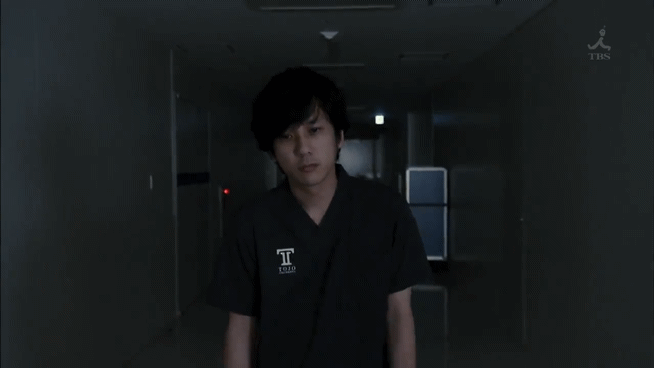





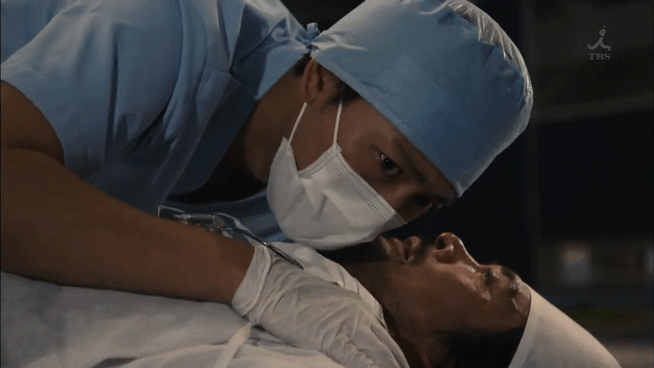




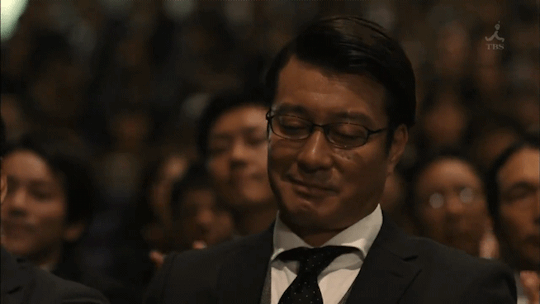



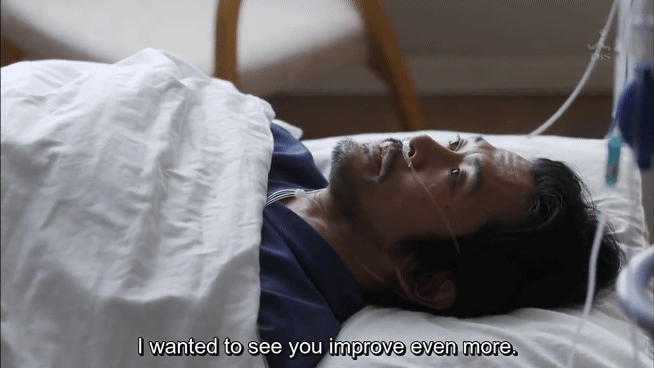


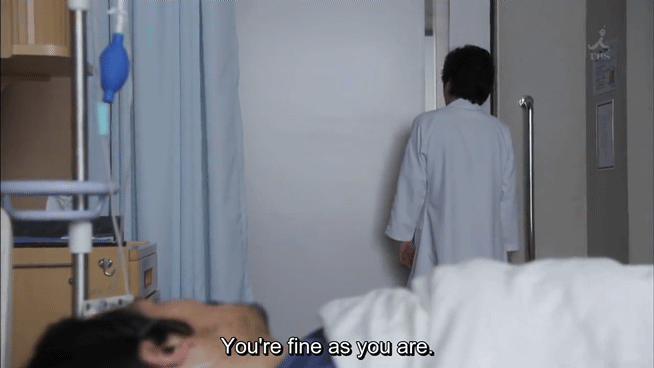


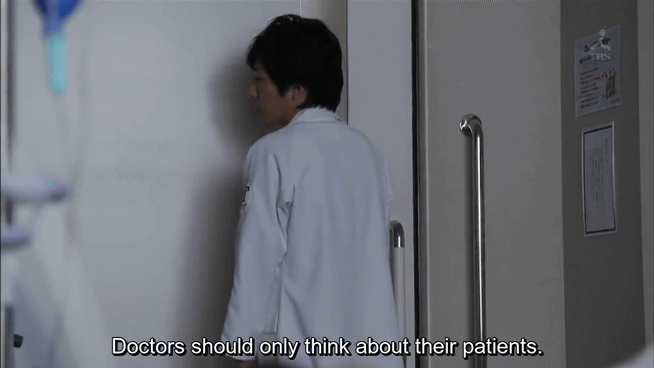
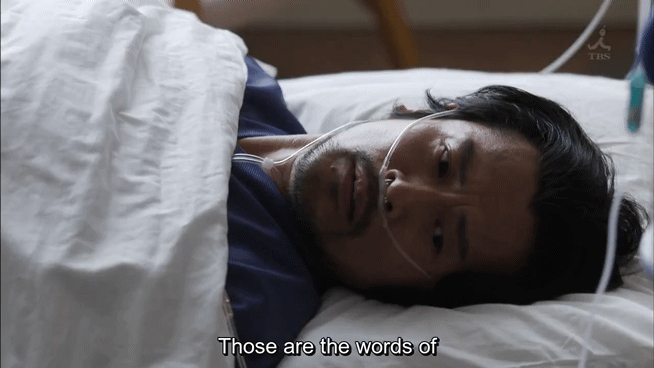




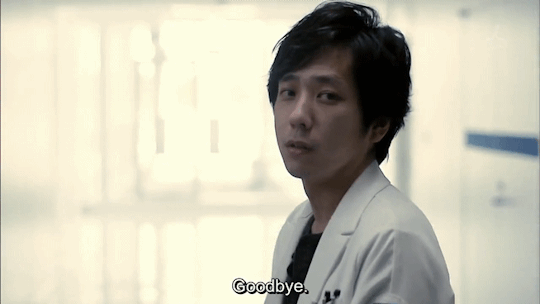
Black Pean S1EP10 [GIFS] 8 END
EP10 recap p1 // P2 // P3
GIFS P1 // P2 // P3 // P4 //P5 //P6 // P7 // P8
#Black Forceps#Black Pean#series#gifs#tokai#tokai seishiro#saeki seigo#seigo saeki#tokai x saeki#tokai & saeki#uchino#uchino seiyo#seiyo uchino#masaaki uchino#uchino masaaki#ninomiya#nino#series gifs#ninomiya kazunari
5 notes
·
View notes
Text




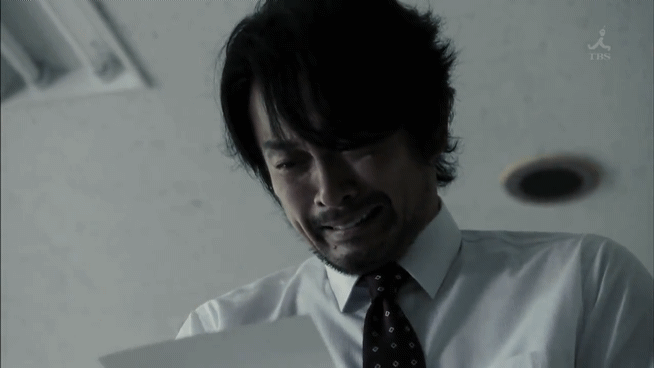


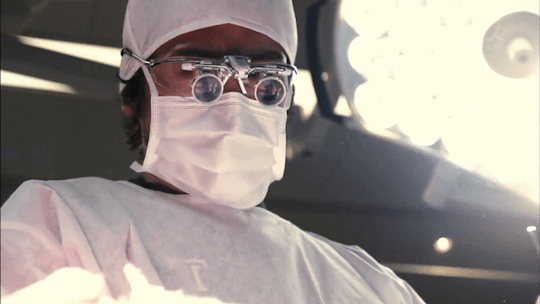


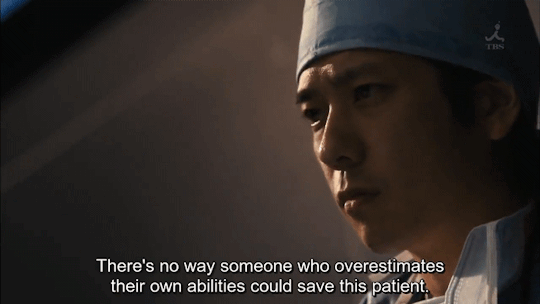
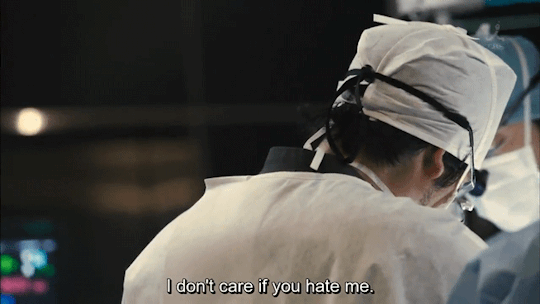
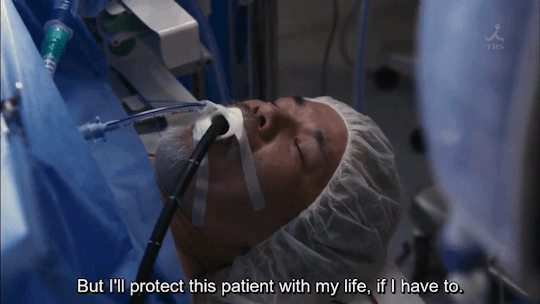
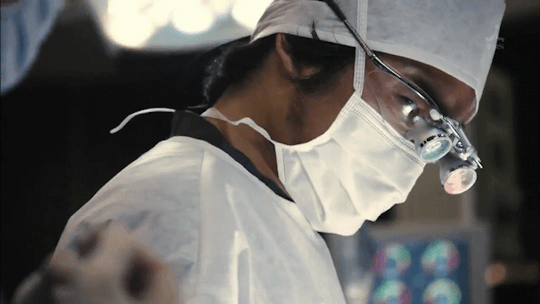




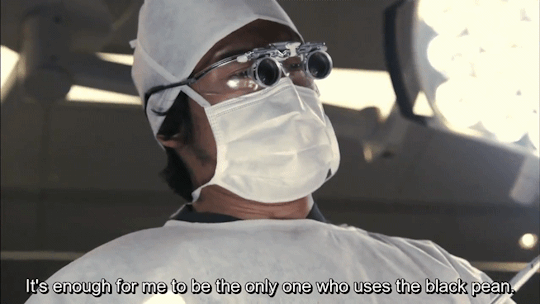
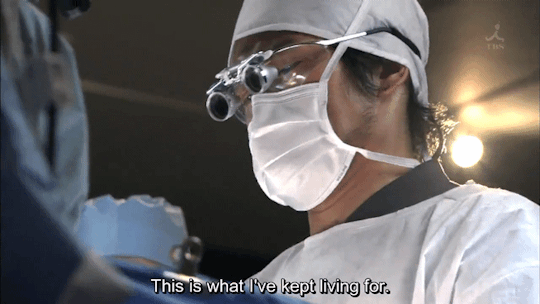
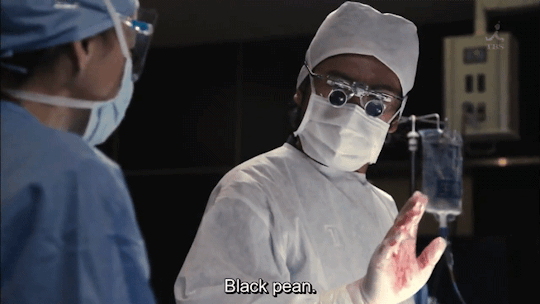
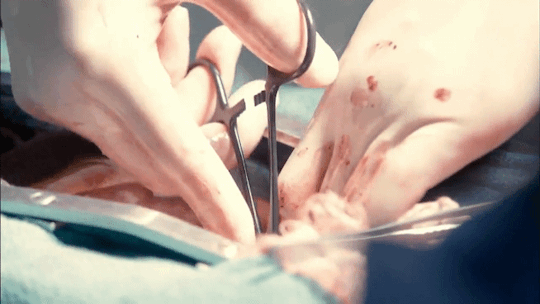

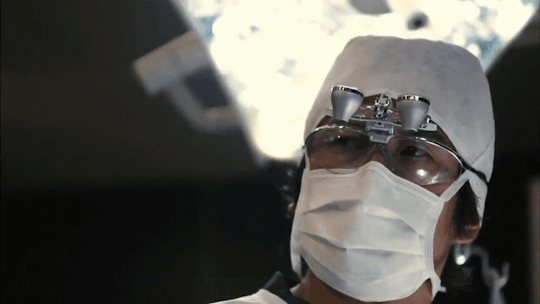



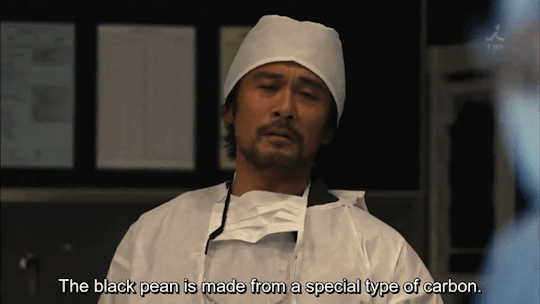
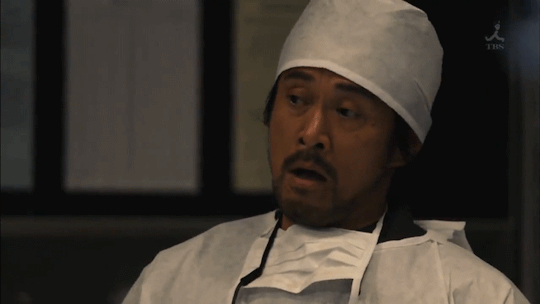
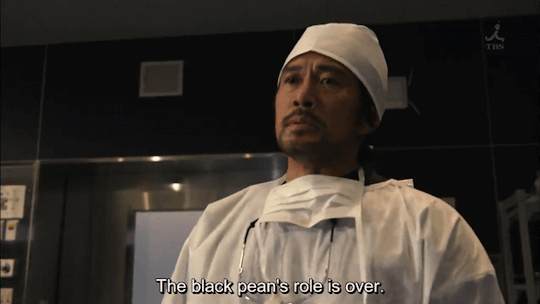
Black Pean S1EP10 [GIFS] 7
EP10 recap p1 // P2 // P3
GIFS P1 // P2 // P3 // P4 //P5 //P6 // P7 // P8
#Black Pean#gifs#series#series gifs#ブラックペアン#Black Forceps#uchino#uchino seiyou#uchino seiyo#seiyo uchino#masaaki uchino#nino#ninomiya kazunari#ninomiya#tokai seishiro#seishiro tokai#saeki seigo#tokai x saeki#tokai & saeki
3 notes
·
View notes